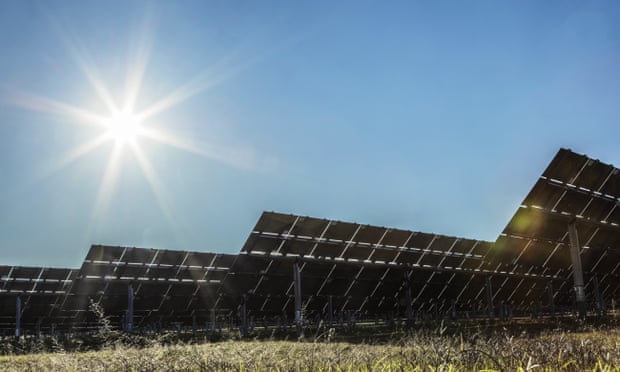Household power bills to fall by about $77 a year as developers bet on renewables

The advance of renewable energy across Australia is driving down household electricity bills and will result in average savings of about $77 a year by 2024, the Australian Energy Market Commission said in its annual survey.
Queensland is projected to lead the way among the states in the National Electricity Market, with a typical household’s bill to drop by 10%, or close to double the national average fall of 5.7%. That will cut the typical Queensland residential bill from $1,226 in 2020-21 to $1,100 by 2023-24.
Victoria is forecast to have the next largest drop, of 8%, trimming the average cost of power from $1,290 in the most recent year to $1,191 by 2o23-24. NSW consumers would be paying 4% less – shaving $50 from the $1,253 paid now – but ACT would buck the trend, with the bill swelling by 4% to $2,081.
While the three-year trend would deliver residential bills back to 2017 levels, the downward direction is likely to be disrupted in 2022-23 when the 1,680-megawatt Liddell coal-fired power is scheduled to shut down. That closure is forecast to contribute to a rise in wholesale power prices, the commission said.
The main driver of lower prices will be the addition of new large-scale solar plants. Developers have committed to 2,671MW of new solar and 1,393MW of new windfarms.
They have also committed to 904MW of new gas-fired capacity and 470MW of large batteries across the NEM. Of the new plants, NSW leads with 2,287MW ahead of Queensland’s 1,557MW and Victoria’s 1,354MW.
“We are starting to see increases in the cost of network investments, and this is likely to accelerate over the next decade as more network investment is required to connect dispersed new generation to the grid,” the AEMC said.
The energy minister Angus Taylor said further falls in electricity prices “will put more money in the hip pockets of families and households, [which is] critical as we recover from the impact of Covid.”
“Our actions have supported a 10 per cent drop in household electricity costs under this government – that’s 11 quarters in a row of falls in year-on-year household electricity costs across the country,” he said.
The price projections follow the release from the Australian Bureau of Statistics on Wednesday showing renewable energy supplies increased by 15% in 2019-20, extending the five-year trend.
Solar, wind and hydro contributed 222 petajoules of energy to domestic supplies, the ABS’s Jonathon Khoo said.
“[A] single PJ could provide 47,000 Australian homes with electricity for 12 months,” he said. “Solar drove this increase with an expansion of large-scale solar photovoltaic power stations.”
Interestingly, household energy use and the aggregate energy intensity use by industry both extended their downward trends. In 2019-20, average households used 5.4% less energy, totalling 125 gigajoules, while industry used 3.6% less per dollar-unit of output.
On the export front, Australia’s black coal shipments eased 0.6% to 11,062 petajoules in 2019-20 from a year earlier. Liquefied Natural Gas exports rose 6% in the year to 4,393 PJs in 2019-20, the ABS said.
https://www.theguardian.com/australia-news/2021/nov/25/household-power-bills-to-fall-by-about-77-a-year-as-developers-bet-on-renewables